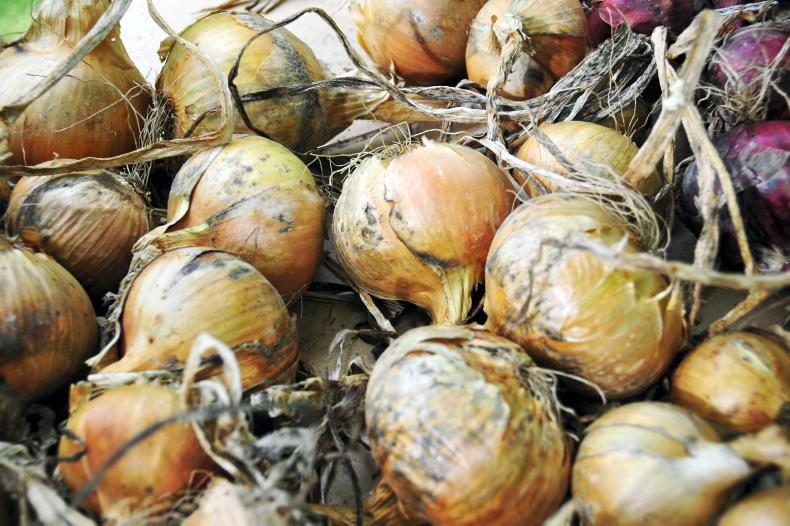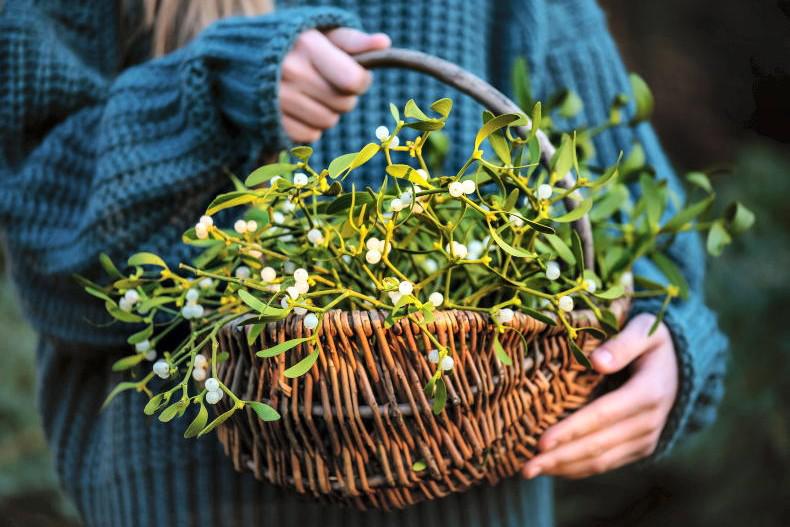Name: The name petunia is adapted from the name used in its native South America, which is petun. The term is also used for tobacco, which is also native to Brazil and its surrounding countries.
Botanical name: Petunia is the correct Latin name for this plant. There are various species of petunia, but these have been superseded by hybrids, which have been bred specifically as bedding plants or for growing in containers. These variety selections usually have a special feature, such as picotee edges or strong, dark veining.
Family: Petunia is part of the large potato family, or tomato family, both of which names are used. But Solanaceae is its correct botanical family name and, for many plants, this defines their familial connection. The family connection with potato is contained in its name, the solanum that produces tubers. There is also Solanum jasminoides, the potato vine, which does indeed look somewhat like the white flowered jasmine when it is in flower.
Petunias have been very good this summer because they love sunshine and heat, being from South America. Although they had a few bad years up to this, they did not fare as badly as they might have twenty years ago. In those days, petunias were very different and what the plant breeders have achieved is remarkable.
Not so long ago, petunias melted into a brown mush after a few days’ rain. The large trumpet flowers would collapse and grey mould disease would grow on the rotting flowers, and often spread to buds, too. The plants would not perform well unless there was a reasonable amount of dry, sunny weather.
Another problem with petunias then was their tendency to stop flowering when the first flush of flowers had set seeds. A good set of seeds saw the plants direct their growth energy into ripening the seeds and they would suspend any more flowering.
The seed-pods and spent flowers had to be dead-headed to maintain flowering. And dead-heading petunias is not just a fiddly job but a messy one, because the seed pods and foliage are sticky, and the spent flowers were often mushy and wet.
There were two groups of petunia varieties: the Grandiflora types, with large flowers but a tendency to collapse in rain, and the more rain-resistant Multiflora types, with smaller flowers but carried in greater numbers. There were some double-flowered kinds, practically guaranteed to turn to mush in wet weather.
Then along came the Surfinia types, purple and pink to start with, trailing and producing a sheet of vivid colour. These did not stop flowering because they did not set seeds. In fact, they had to be raised by cuttings and were a bit more expensive as a result.
Growing petunias
The new varieties bred since are vigorous - many of them trailing kinds - and are very good in pots, baskets and other containers, often making a metre-long sheet of flowers, month after month, and usually late into autumn. Petunias need good, open, well aerated soil which retains moisture and nutrients. They also like to have good light; a position with a few hours’ sunshine is ideal.
Many of the newer varieties do not need dead-heading, either because they set no seeds or they have been bred to continue flowering. Also, the newer varieties are remarkably rain-resistant. Flowers that would have collapsed at the first heavy rain now flower on for weeks.
Being scented in many cases, a couple of plants potted up in May make superb flowering pot plants for a greenhouse, porch, conservatory or even a bright sunny window sill. This is a very inexpensive way to increase the value of these plants.
Kitchen
garden
Picking and storing onions
Onions are one of the few vegetables where it is possible to have a supply year-round from the garden. The ordinary main crop varieties are generally sown as sets during April.

Onions are one of the few vegetables where it is possible to have a supply year-round from the garden.
These onions are lifted in late summer or early autumn and provide a mean crop of bulb onions until April or May of next year, depending on the year’s weather. Japanese bulb onions, notably ‘Senshyu Yellow’, are sown in the late summer from seed. These grow into the winter months and give crops of small onions earlier than the main crop varieties.
Grown from onion sets, which are small bulbs, maincrop onions are easy to grow, planted in April. By the end of July or early August, the bulbs reach full-size. And by the end of August, the bulb tops flop over and turn yellow. The bulbs can be lifted with a fork or simply pulled, and left on the soil surface for two or three dry days.
Next, the soil is shaken off the roots and the tops will have wilted. All the bulb onions can be placed in a greenhouse or tunnel to cure the bulbs. This step of drying and curing onions increases the dry matter in the bulbs, put them into dormancy for winter, and makes them last longer into spring.
Fruit, vegetables and herbs
Swiss chard, Chinese leaves and lettuce can be sown still. Spring cabbage should be sown now, too. Do not let weeds go to seed to avoid building up trouble for the years to come. There was a lot of apple scab and brown rot and damage caused by hail stones.
Trees, shrubs and roses
It is not too late for watering young trees and shrubs occasionally, if not thriving, and a foliar feed sprayed on in dull weather would help them prepare for winter. Feeding roses now will bring on late flowers. Prune early flowering shrub roses and ramblers.
Lawn
Lawn edges should be trimmed neatly around beds and borders. Lawns are looking good around the country after several weeks of showery weather. There is still time to use lawn weedkiller, but do not use lawn weedkiller on a wildflower lawn.
Flowers
Bedding plants in pots and baskets are also in need of regular watering and feeding. Feeding every two weeks or so is essential to keep the plants going after the first flush. Sow seeds of perennial flowers. Weeds should not be allowed to go to seed.
Greenhouse and house plants
Take cuttings of geraniums, fuchsias and other tender plants to overwinter for next year. Continue to train and side-shoot tomatoes and cucumbers, and pick the fruit as it ripens. Continue watering and feeding greenhouse plants, especially those water in grow-bags.
Read more
Gardening with Gerry: yucca me feeling tropical
Gardening with Gerry: there's garlic, and then there's society garlic
Name: The name petunia is adapted from the name used in its native South America, which is petun. The term is also used for tobacco, which is also native to Brazil and its surrounding countries.
Botanical name: Petunia is the correct Latin name for this plant. There are various species of petunia, but these have been superseded by hybrids, which have been bred specifically as bedding plants or for growing in containers. These variety selections usually have a special feature, such as picotee edges or strong, dark veining.
Family: Petunia is part of the large potato family, or tomato family, both of which names are used. But Solanaceae is its correct botanical family name and, for many plants, this defines their familial connection. The family connection with potato is contained in its name, the solanum that produces tubers. There is also Solanum jasminoides, the potato vine, which does indeed look somewhat like the white flowered jasmine when it is in flower.
Petunias have been very good this summer because they love sunshine and heat, being from South America. Although they had a few bad years up to this, they did not fare as badly as they might have twenty years ago. In those days, petunias were very different and what the plant breeders have achieved is remarkable.
Not so long ago, petunias melted into a brown mush after a few days’ rain. The large trumpet flowers would collapse and grey mould disease would grow on the rotting flowers, and often spread to buds, too. The plants would not perform well unless there was a reasonable amount of dry, sunny weather.
Another problem with petunias then was their tendency to stop flowering when the first flush of flowers had set seeds. A good set of seeds saw the plants direct their growth energy into ripening the seeds and they would suspend any more flowering.
The seed-pods and spent flowers had to be dead-headed to maintain flowering. And dead-heading petunias is not just a fiddly job but a messy one, because the seed pods and foliage are sticky, and the spent flowers were often mushy and wet.
There were two groups of petunia varieties: the Grandiflora types, with large flowers but a tendency to collapse in rain, and the more rain-resistant Multiflora types, with smaller flowers but carried in greater numbers. There were some double-flowered kinds, practically guaranteed to turn to mush in wet weather.
Then along came the Surfinia types, purple and pink to start with, trailing and producing a sheet of vivid colour. These did not stop flowering because they did not set seeds. In fact, they had to be raised by cuttings and were a bit more expensive as a result.
Growing petunias
The new varieties bred since are vigorous - many of them trailing kinds - and are very good in pots, baskets and other containers, often making a metre-long sheet of flowers, month after month, and usually late into autumn. Petunias need good, open, well aerated soil which retains moisture and nutrients. They also like to have good light; a position with a few hours’ sunshine is ideal.
Many of the newer varieties do not need dead-heading, either because they set no seeds or they have been bred to continue flowering. Also, the newer varieties are remarkably rain-resistant. Flowers that would have collapsed at the first heavy rain now flower on for weeks.
Being scented in many cases, a couple of plants potted up in May make superb flowering pot plants for a greenhouse, porch, conservatory or even a bright sunny window sill. This is a very inexpensive way to increase the value of these plants.
Kitchen
garden
Picking and storing onions
Onions are one of the few vegetables where it is possible to have a supply year-round from the garden. The ordinary main crop varieties are generally sown as sets during April.

Onions are one of the few vegetables where it is possible to have a supply year-round from the garden.
These onions are lifted in late summer or early autumn and provide a mean crop of bulb onions until April or May of next year, depending on the year’s weather. Japanese bulb onions, notably ‘Senshyu Yellow’, are sown in the late summer from seed. These grow into the winter months and give crops of small onions earlier than the main crop varieties.
Grown from onion sets, which are small bulbs, maincrop onions are easy to grow, planted in April. By the end of July or early August, the bulbs reach full-size. And by the end of August, the bulb tops flop over and turn yellow. The bulbs can be lifted with a fork or simply pulled, and left on the soil surface for two or three dry days.
Next, the soil is shaken off the roots and the tops will have wilted. All the bulb onions can be placed in a greenhouse or tunnel to cure the bulbs. This step of drying and curing onions increases the dry matter in the bulbs, put them into dormancy for winter, and makes them last longer into spring.
Fruit, vegetables and herbs
Swiss chard, Chinese leaves and lettuce can be sown still. Spring cabbage should be sown now, too. Do not let weeds go to seed to avoid building up trouble for the years to come. There was a lot of apple scab and brown rot and damage caused by hail stones.
Trees, shrubs and roses
It is not too late for watering young trees and shrubs occasionally, if not thriving, and a foliar feed sprayed on in dull weather would help them prepare for winter. Feeding roses now will bring on late flowers. Prune early flowering shrub roses and ramblers.
Lawn
Lawn edges should be trimmed neatly around beds and borders. Lawns are looking good around the country after several weeks of showery weather. There is still time to use lawn weedkiller, but do not use lawn weedkiller on a wildflower lawn.
Flowers
Bedding plants in pots and baskets are also in need of regular watering and feeding. Feeding every two weeks or so is essential to keep the plants going after the first flush. Sow seeds of perennial flowers. Weeds should not be allowed to go to seed.
Greenhouse and house plants
Take cuttings of geraniums, fuchsias and other tender plants to overwinter for next year. Continue to train and side-shoot tomatoes and cucumbers, and pick the fruit as it ripens. Continue watering and feeding greenhouse plants, especially those water in grow-bags.
Read more
Gardening with Gerry: yucca me feeling tropical
Gardening with Gerry: there's garlic, and then there's society garlic










SHARING OPTIONS